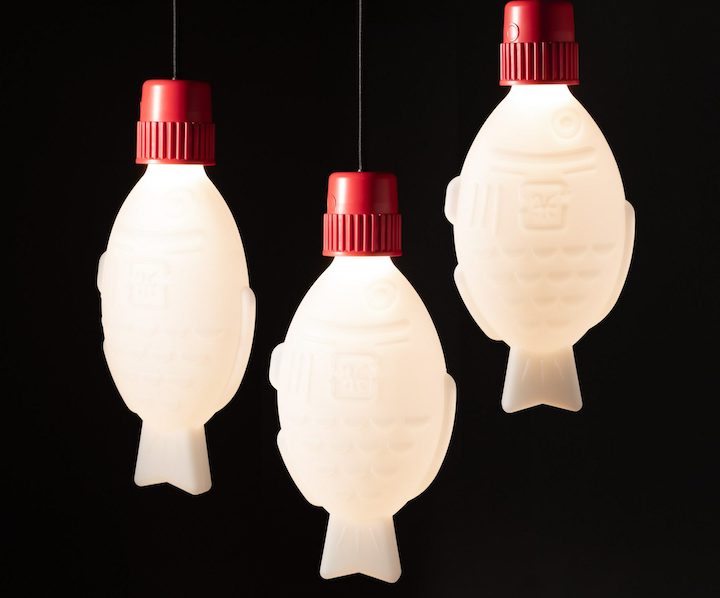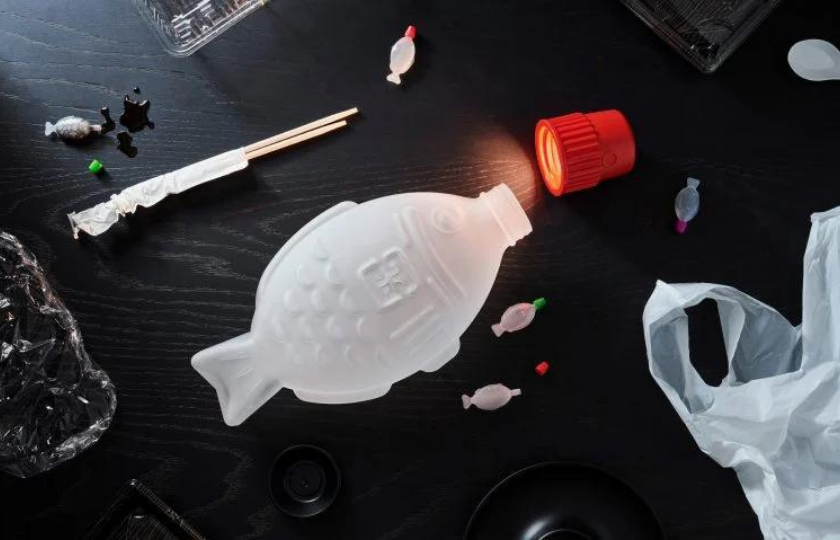Designed to stop ocean-bound plastic at the “sauce” (source), Heliograf designers Jeffrey Simpson and Angus Ware are raising awareness of the wastage of single-use soy packets through their cute fish lamps, Light Soy.
Launched in the 1950s, the single-use soy packets shaped like a fish – and called “shoyu-tai” in Japanese – were invented to replace glass or ceramic soy bottles. They also became popular with takeaway sushi vendors because of their convenience and cuteness.
Unfortunately, just like plastic straws or cups, the empty packets end up as waste. While they’re made of polyethylene, a recyclable plastic, they often cause malfunctions of recycling machines because of their size. So more often than not, they end up in landfills or thrown in the ocean – where some marine life are prone to mistake the soy packets as food because they’re shaped like fish!
As a symbolic statement against single-use plastic, Heliograf decided to look for a practical and purposeful way to highlight this issue by creating lamps that ironically looks like single-use soy fish packets.
The lamps are available in three varieties, Light Soy (standard size), Light Soy Deluxe (table lamp), and Light Soy Pendant (hanging lamp).

Light Soy and Light Soy deluxe feature fast rechargeable batteries with USB-C and touch control dimming. While the Light Soy Pendant is powered using main electricity or using the included external power supply.
All the fish lamps are made using 75-per-cent ocean-bound plastic and 100-per-cent biodegradable, plastic-free packaging.
“The little soy packets are a waste and, frankly, shouldn’t exist,” the company stated on its website. “The biggest way you can make a difference is to skip the fish – and stop using all single-use plastic whenever possible.”
As a member of 1% For the Planet, a portion (1%) of the Sydney, Australia design studio’s revenue goes to non-profit organisations to prevent plastic pollutions from our oceans.



